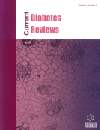
Full text loading...
We use cookies to track usage and preferences.I Understand
Diabetes Mellitus (DM) is a global health concern that affects millions of people globally. The present review aims to narrate the clinical guidelines and therapeutic interventions for Type 2 Diabetes Mellitus (T2DM) patients. Furthermore, the present work summarizes the ongoing phase 1/2/3 and clinical trials against T2DM.
A meticulous and comprehensive literature review was performed using various databases, such as PubMed, MEDLINE, Clinical trials database (https://clinicaltrials.gov/), and Google Scholar, to include various clinical trials and therapeutic interventions against T2DM.
Based on our findings, we concluded that most T2DM-associated clinical trials are interventional. Anti-diabetic therapeutics, including insulin, metformin, Dipeptidyl Peptidase-4 (DPP-4) inhibitors, Glucagon-Like Peptide-1 Receptor Agonists (GLP-1RAs), and Sodium-Glucose cotransporter-2 (SGLT-2) inhibitors are frontline therapeutics being clinically investigated. Currently, the therapeutics in phase IV clinical trials are mostly SGLT-2 inhibitors, implicating their critical contribution to the clinical management of T2DM.
Despite the success of T2DM treatments, a surge in innovative treatment options to reduce diabetic consequences and improve glycemic control is currently ongoing. More emphasis needs to be on exploring novel targeted drug candidates that can offer more sustained glycemic control.

Article metrics loading...

Full text loading...
References


Data & Media loading...

